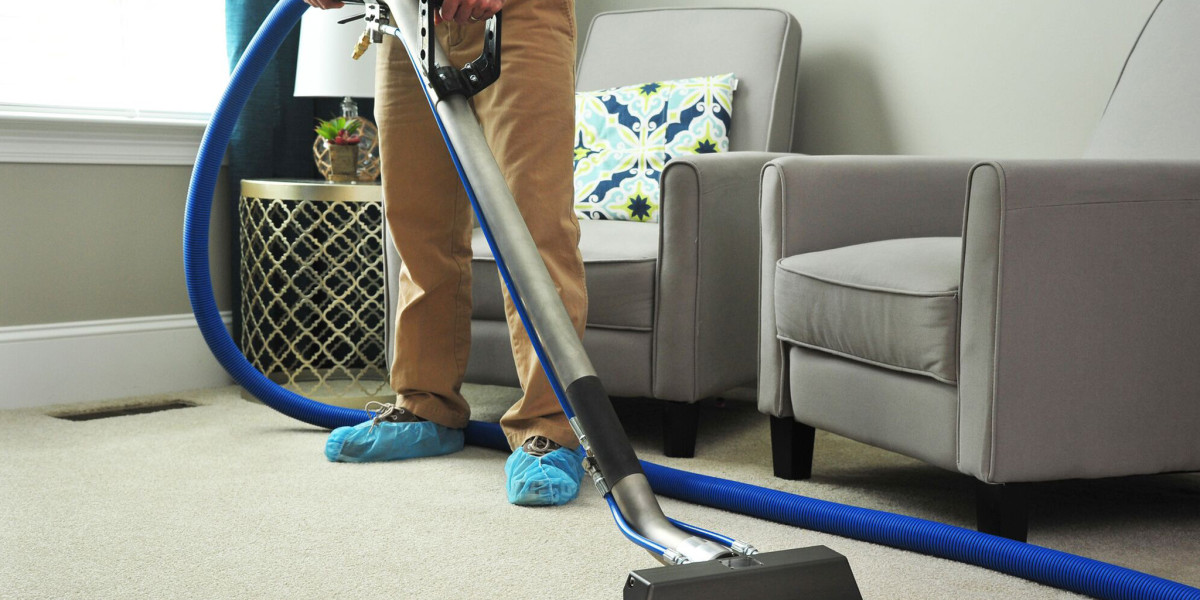Panel saws play a vital role in the woodworking industry, offering the precision and efficiency required for cutting large panels and various materials. They are commonly used in workshops, factories, and by professionals seeking accurate and consistent results. Choosing the right panel saw requires careful consideration of multiple factors, including functionality, safety features, and long-term reliability. For those intending to buy panel saws in Australia, understanding these machines’ operation and maintenance is equally important. Furthermore, panel saw troubleshooting and repairs can minimise downtime and ensure uninterrupted productivity. This guide provides insights into purchasing decisions and practical tips for maintaining and resolving issues with panel saws, tailored for woodworking needs. By focusing on essential features and practices, professionals can enhance their craftsmanship while extending the lifespan of their equipment. The following sections explore these aspects in detail.
Understanding Your Needs before Buying Panel Saws
Assessing specific woodworking requirements is fundamental when selecting a panel saw. The intended material type and thickness should guide decisions on power capacity and blade size. Larger materials may necessitate a higher power output, while compact options may suffice for lighter tasks.
Additionally, the layout and available space in the workspace should be taken into account, as some models are more space-efficient than others. For high-volume projects, features that enhance efficiency, such as quick adjustments and durable components, become particularly valuable.
Furthermore, considering potential future needs, such as expanded production or varied material types, ensures the chosen panel saw remains versatile. Thorough evaluation of these factors contributes to selecting a machine that aligns with both current and evolving requirements.
Safety Features to Consider in Panel Saws
Modern panel saws incorporate various safety measures designed to reduce risks during operation. Key features include blade guards, which serve to minimise accidental contact, and riving knives, which help prevent material kickback. Emergency stop mechanisms are another essential feature, enabling immediate shutdown in critical situations. Some models also include anti-restart protection to avoid accidental activation after a power outage.
Additional features such as overload protection systems can help safeguard the motor from damage during heavy use. To further ensure safe operation, proper lighting around the machine and non-slip surfaces on work tables are beneficial considerations. Incorporating these elements into the selection process enhances operational safety and supports adherence to workplace safety standards.
Importance of Precision and Accuracy
Achieving precision and accuracy in panel saws is essential for delivering consistent and professional-quality results in woodworking tasks. Features such as adjustable fences and precise measurement scales ensure that materials are cut to exact specifications, reducing the likelihood of errors. Accurate blade positioning mechanisms allow for clean, straight cuts across various materials, while clear markings on guide rails assist in maintaining consistent alignment. Incorporating features that enhance accuracy can minimise material waste, improving overall project efficiency.
For intricate projects requiring detailed cuts, systems that offer micro-adjustment capabilities enable fine-tuning for greater precision. These considerations make accurate and reliable operation an integral factor when evaluating panel saws to meet the diverse demands of woodworking applications.
Ease of Use and Ergonomics
Designing panel saws with ease of use and ergonomics in mind significantly enhances operational efficiency and user comfort. Machines with intuitive adjustment mechanisms and clearly labelled controls simplify setup and operation. Features such as adjustable working heights and strategically positioned handles reduce physical strain during extended periods of use.
Compact models designed for easy manoeuvrability can be advantageous in workshops with limited space. Attention to ergonomic aspects, such as reduced vibration and noise levels, also contributes to a more comfortable working environment. Additionally, smooth material feed systems streamline the cutting process, minimising effort and enhancing precision. Selecting a panel saw with these attributes ensures seamless operation while supporting prolonged productivity in diverse woodworking applications.
Maintaining Your Panel Saw
Regular attention to a panel saw ensures its reliability and efficiency over time. Cleaning sawdust and debris from internal components prevents build-up that could hinder performance. Lubricating moving parts maintains smooth functionality and reduces wear. Components such as belts, bearings, and fastenings should be periodically inspected to identify signs of damage or loosening. Ensuring proper tension in drive belts and addressing minor issues promptly can prevent further complications.
Additionally, maintaining clear ventilation pathways for the motor reduces overheating risks. Adjustments to the alignment of essential parts, performed as part of routine care, support consistent accuracy during operation. Establishing and adhering to a maintenance routine promotes the longevity of the equipment and minimises interruptions to woodworking tasks.
Common Troubleshooting Tips for Panel Saws
Identifying and addressing common issues promptly is vital for maintaining panel saw performance. Blade wobbling can often be resolved by inspecting the arbor nut and ensuring it is securely tightened. Irregular cuts may result from misaligned fences or guide rails, which require careful adjustment to restore precision. If the machine fails to start, checking the power switch, connections, and any fuses can pinpoint electrical faults.
Overheating motors might indicate clogged ventilation, which can be cleared to improve airflow. Excessive vibration may stem from unbalanced blades or loose components; these should be checked and rectified. Proactively addressing such issues reduces downtime, prevents further damage, and ensures the saw continues to deliver consistent results during extended use.
Blade Replacement and Adjustment
The performance of a panel saw heavily depends on the condition and suitability of its blade. Regular inspection is crucial to identify signs of wear or damage, such as chipped teeth or reduced cutting efficiency. Ensuring the blade is correctly secured minimises operational issues, including vibration and uneven cuts. Selecting a blade designed for the specific material being processed improves both precision and overall efficiency.
Adjustments to blade tension or positioning may occasionally be necessary to maintain consistent alignment and cutting quality. Operators should also ensure that any blade changes are conducted in accordance with the machine’s guidelines to avoid damaging components. Proper blade management enhances the reliability and safety of the panel saw during operation.
Checking and Adjusting Saw Alignment
Proper saw alignment is essential for achieving accurate cuts and maintaining operational safety. The alignment of components such as the blade, fence, and guide rails should be periodically inspected using precision tools like squares or gauges. Misalignment can result in uneven cuts or increased wear on the blade, affecting the overall performance of the machine.
Adjustments can be made by loosening and repositioning the necessary parts, ensuring they are correctly aligned with the cutting path. Careful attention to alignment settings also reduces strain on the motor and other critical components, promoting a smoother operation. Maintaining alignment as part of routine checks helps optimise the machine’s cutting precision and enhances its reliability during extended use.
Dealing with Electrical Issues
Electrical issues within panel saws can arise from several factors, including faulty wiring, damaged components, or inconsistent power supply. Investigating the power cord and plugs for visible damage is an essential step, as worn insulation or loose connections can hinder performance. Internal components, such as switches or capacitors, should be checked for signs of wear or malfunction that may disrupt operation.
Ensuring that all connections within the machine are secure helps maintain steady electrical flow. If problems persist, assessing the compatibility of the saw with the workshop’s power capacity is advisable. Professional servicing may be required to diagnose and rectify complex faults, ensuring the equipment operates reliably and efficiently without unnecessary interruptions to its function.
Noise and Vibration Troubleshooting
Excessive noise and vibration during panel saw operation can indicate imbalances or mechanical issues within the machine. Inspecting the blade for proper mounting and balance is essential, as misaligned or worn blades can contribute to instability. Checking the condition and placement of motor mounts can also reveal sources of vibration. Loose fastenings within the structure should be tightened to enhance stability.
Additionally, ensuring that all rotating components are clean and free from obstructions helps maintain smooth operation. Regular monitoring of these elements supports consistent performance, allowing the machine to function with reduced disturbances in various woodworking tasks.
Evaluating Dust Collection Systems
A well-functioning dust collection system is essential for maintaining the performance and safety of panel saws. Properly designed systems help to extract debris efficiently, reducing potential build-up that could compromise the machine’s operation. Evaluating the design and capacity of dust extraction ports ensures they are compatible with the workshop’s overall dust management setup.
Systems equipped with effective filters minimise fine particle dispersion, which can otherwise affect air quality. Additionally, routine inspection of hoses and collection units for blockages or damage helps sustain optimal performance. Considering these factors supports the smooth functioning of panel saws while contributing to a cleaner workspace.
Cost Considerations When You Buy Panel Saws Australia
Evaluating the cost to buy panel saws Australia involves more than just the initial purchase price. Factors such as energy efficiency, availability of replacement parts, and ease of maintenance significantly influence long-term expenses. Opting for a model with durable components and advanced features may result in reduced repair costs over time.
Furthermore, considering warranties and service options can enhance value by providing additional support. Balancing affordability with functionality ensures an investment that aligns with both immediate and future requirements.
Conclusion
In Australia, panel saw troubleshooting and repairs is vital for woodworking success. A well-chosen saw, equipped with essential safety and precision features, ensures quality results and a safer work environment. Understanding common issues and performing routine maintenance are crucial for uninterrupted productivity. By balancing functionality with long-term reliability and proactively addressing potential problems, professionals can minimise downtime and enhance their craftsmanship while extending the lifespan of their equipment. Ultimately, a strategic approach to both purchasing and maintaining a panel saw is key to achieving consistent, high-quality outcomes.
Frequently Asked Questions
What are the most important safety features to look for in a panel saw?
The most important safety features include blade guards to prevent contact, a riving knife to stop kickback, and an emergency stop button for immediate shutdown. These features are designed to significantly reduce the risk of accidents and are essential for any professional or hobbyist workshop.
How can I ensure my panel saw is always accurate?
To ensure your panel saw remains accurate, regularly check and adjust the alignment of the blade and fence. Use precision tools like squares to verify that all components are aligned correctly. Proactive maintenance prevents uneven cuts and material waste, ensuring consistent, high-quality results.
What should I do if my panel saw’s blade starts to wobble?
If your saw blade wobbles, first check that the arbor nut is securely tightened. A loose nut is a common cause of wobble. Also, inspect the blade itself for any signs of damage or imbalance. If the issue persists, the saw’s arbor or bearings may need professional inspection.
Why regular maintenance is important for my panel saw?
Regular maintenance is crucial for both the longevity and consistent performance of your panel saw. This includes cleaning sawdust and debris, lubricating moving parts, and inspecting components for wear. Proper care prevents common issues like overheating and vibration, reduces downtime, and ensures the machine delivers accurate cuts every time.
How can I troubleshoot an electrical issue with my panel saw?
If your saw won’t start, begin by checking the power cord and plug for any visible damage. Also, ensure the power switch is in the correct position. If the problem continues, there might be a fault with the internal wiring or fuses, and it’s best to consult a qualified technician for further diagnosis and repair.
| Related Business Listings |
| Contact Directory |
| Local Business Profiles |









